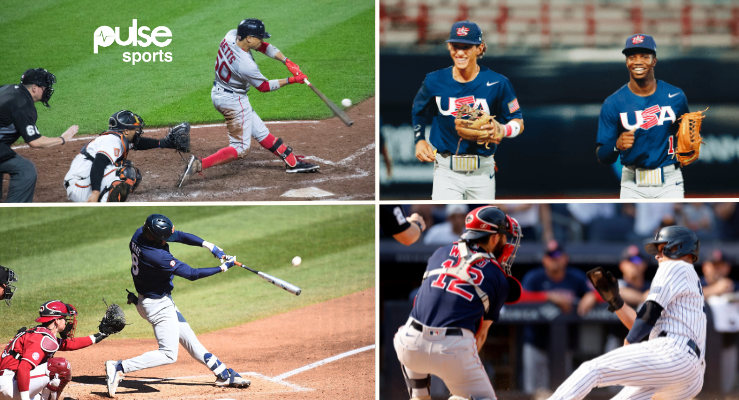The Ins and Outs of Baseball Innings
Baseball is a sport steeped in tradition, with a rich history and a set of rules that have evolved over time. One of the fundamental aspects of the game is the concept of innings, which dictates the structure and flow of each baseball contest. In this comprehensive article, we’ll explore the intricacies of baseball innings, providing a detailed FAQ section to address common questions and concerns.
The Basics of Baseball Innings
A standard baseball game consists of nine innings, with each team taking turns at bat and in the field. The visiting team bats first in the top half of each inning, while the home team bats in the bottom half. Each half-inning ends when three outs are recorded, either through strikeouts, force outs, tag outs, or other means.The objective of each team is to score more runs than their opponent by the end of the ninth inning. If the game is tied after nine innings, additional extra innings are played until a winner is determined.
Factors Affecting the Number of Innings
While the standard baseball game is nine innings long, there are several factors that can influence the number of innings played in a given contest:
Extra Innings
If the game is tied after nine innings, the teams will continue to play additional extra innings until one team emerges victorious. The number of extra innings played can vary, with some games lasting well into the double digits.
Shortened Games
In certain circumstances, a baseball game may be shortened to fewer than nine innings. This can occur due to weather conditions, such as rain or darkness, or if one team is significantly ahead in the score.
Minor League and Youth Baseball
In some levels of baseball, such as minor league and youth leagues, the standard number of innings may be fewer than nine. For example, in Little League Baseball, games are typically six innings long.
Mercy Rule
Some leagues have implemented a “mercy rule,” which ends the game early if one team is ahead by a significant margin (e.g., 10 runs or more) after a certain number of innings. This rule is designed to prevent lopsided games and ensure a more competitive experience for all participants.
The Importance of Innings in Baseball Strategy
The concept of innings is not just a structural element of the game; it also plays a crucial role in the strategic decision-making of baseball teams and managers. Here are some ways in which innings influence the game’s strategy:
Pitching Rotations
Managers must carefully manage their pitching staff, ensuring that they have enough healthy and effective pitchers to last through the nine (or more) innings of a game. Decisions about starting pitchers, relief pitchers, and bullpen usage are all influenced by the number of innings in a game.
Lineup Management
The batting order and substitutions are also affected by the number of innings. Managers must consider factors such as player fatigue, matchups, and the need for pinch-hitters or defensive replacements as the game progresses.
Scoring Opportunities
The number of innings can impact the scoring opportunities for each team. In a close game, the later innings may become more crucial as teams try to take the lead or hold onto a narrow advantage.
Momentum Shifts
The ebb and flow of a baseball game can change dramatically from inning to inning. A team that falls behind early may have the chance to mount a comeback in the later innings, while a team that builds an early lead may need to hold on as the game progresses.
FAQ
How many innings are in a standard baseball game?
A standard baseball game consists of nine innings, with each team taking turns at bat and in the field.
What happens if the game is tied after nine innings?
If the game is tied after nine innings, the teams will play additional extra innings until one team emerges victorious.
Are there any exceptions to the nine-inning rule?
Yes, there are some exceptions to the nine-inning rule. In minor league and youth baseball, games may be shorter than nine innings, typically ranging from six to seven innings. Additionally, some leagues have implemented a “mercy rule” that can end the game early if one team is significantly ahead.
How do extra innings work in baseball?
In extra innings, the teams continue to play additional half-innings until one team scores more runs than the other by the end of a completed inning. The rules for extra innings, such as the placement of runners on base, can vary between different leagues and levels of play.
What is the purpose of the innings structure in baseball?
The innings structure in baseball serves several purposes, including:
- Providing a clear and consistent framework for the game
- Allowing for strategic decision-making by managers and coaches
- Creating opportunities for momentum shifts and comebacks
- Ensuring a fair and balanced competition between the two teams
How do the number of innings affect a pitcher’s performance?
The number of innings in a baseball game can have a significant impact on a pitcher’s performance. Pitchers must manage their endurance and pitch counts throughout the game, as they may be required to pitch for the full nine innings (or more) in some cases.
Can the number of innings be changed during a game?
In most cases, the number of innings in a baseball game cannot be changed once the game has started. However, there are some exceptions, such as games that are shortened due to weather conditions or the implementation of a mercy rule.
| Information | Source |
|---|---|
| Standard number of innings in baseball | Wikipedia |






More Stories
Where to Watch USMNT vs Jamaica National Football Team
How I Met My Monster
How Should a Ring Fit